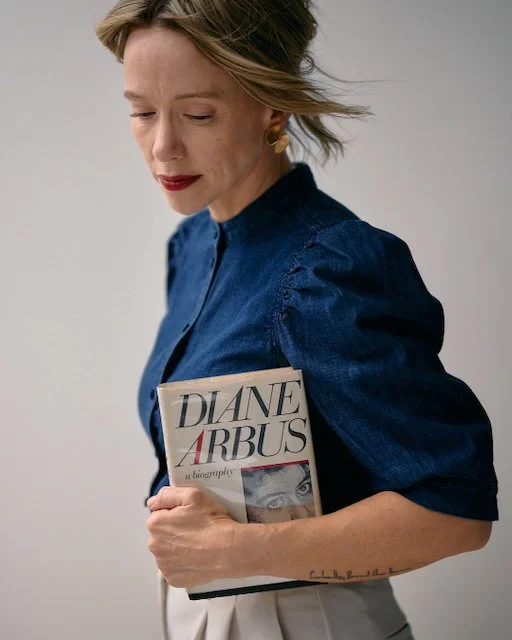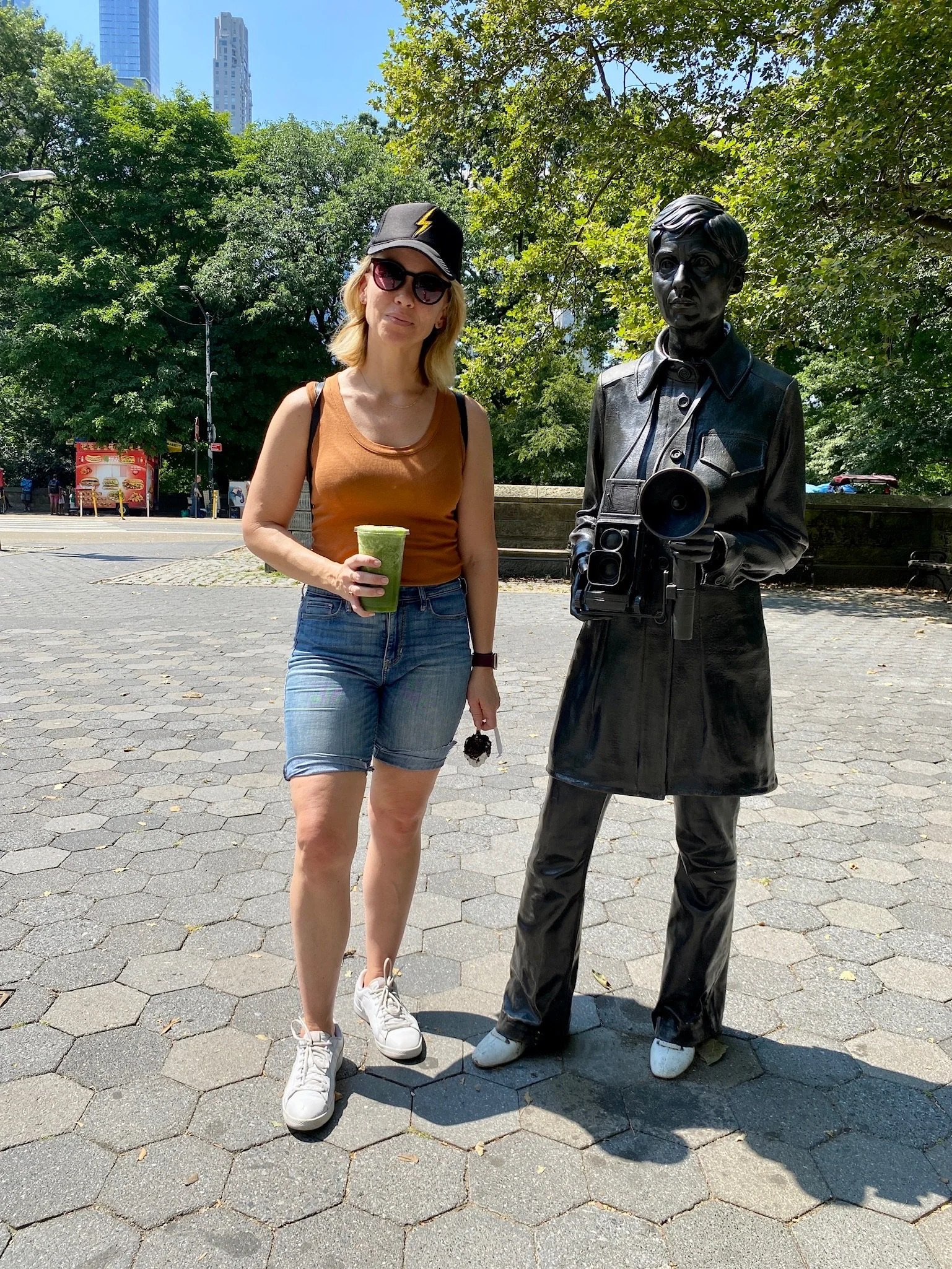Diane Arbus & What She Taught Me About Seeing People
I didn’t expect to think about Diane Arbus that day, let alone stumble across her statue.
I was entering Central Park with a matcha in hand, enjoying a walk while the city buzzed around me. That’s when I looked up, and there she was. A life-size Diane Arbus, holding her camera just as she would’ve back in the 60s, standing near the Artists’ Gate at the park’s southern edge.
It felt strangely full-circle. I first discovered Arbus in photo school, when I was studying the history of photography and came across her iconic portraits that didn’t try to beautify, but to reveal.
Who was Diane Arbus?
Born in New York City in 1923, Diane Arbus (pronounced “AR-bus”) started in fashion photography with her husband, Allan Arbus, before pursuing her own documentary work in the 1950s and 60s.
Her lens turned toward people that mainstream society often overlooked: sideshow performers, people with disabilities, drag queens, nudists, children, and those whose lives existed outside the polished and accepted norms.
She photographed them in their homes, on the street, or in spaces where they could be fully themselves. And she did it with respect—never sensationalizing, always humanizing.
Arbus as a Female Voice in Photography
In an era dominated by male photographers like Richard Avedon and Irving Penn, Arbus was a quiet force. She didn’t soften the world through a “female gaze”—she challenged it. Her work asked: What does it mean to be seen? And what parts of ourselves are we willing to show the world?
As a woman in photography, I still feel her influence. She was brave enough to go past surface-level beauty, unafraid of awkwardness or discomfort, and trusted that truth—even the uncomfortable kind—was beautiful in its own way.
Top 4 Iconic Diane Arbus Photographs You Should Know
What She Taught Me
I photograph families—not circus performers or gender rebels. But I still think of Arbus when I walk into someone’s home and start documenting their story.
She showed me that truth is always more compelling than performance. That people are multidimensional and worthy of being seen exactly as they are—especially in life’s transitional seasons.
When I work with clients, I aim for that same mix of intention and honesty. Whether we’re capturing the chaos of three toddlers under five or the quiet between a new mother and her baby, I believe photographs should reflect real life, not just curated perfection.
Curious about working together, or just want to talk photography? Come say hi on Instagram. My DMs are open.
To stay up to date, I invite you to subscribe to my newsletter here.











